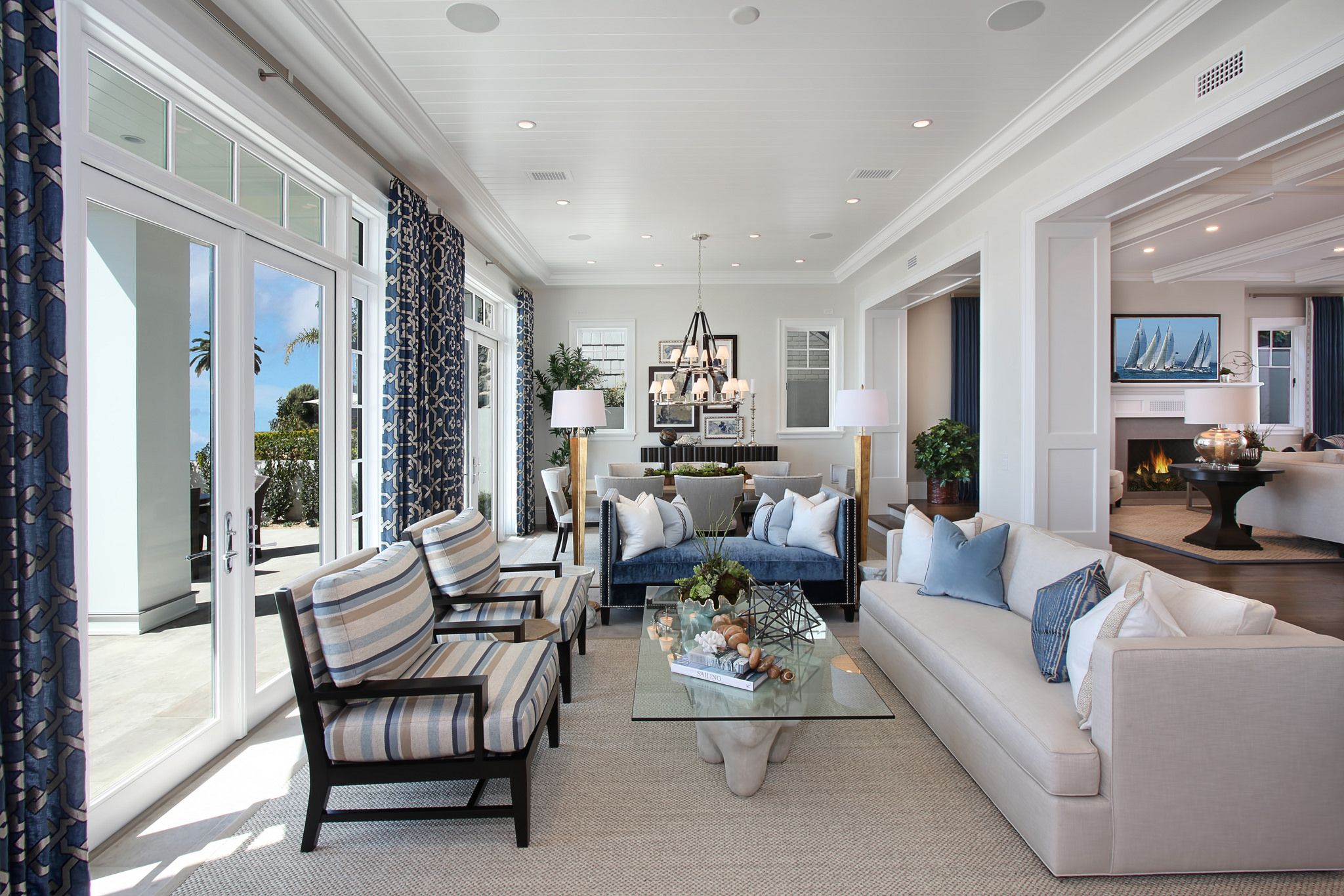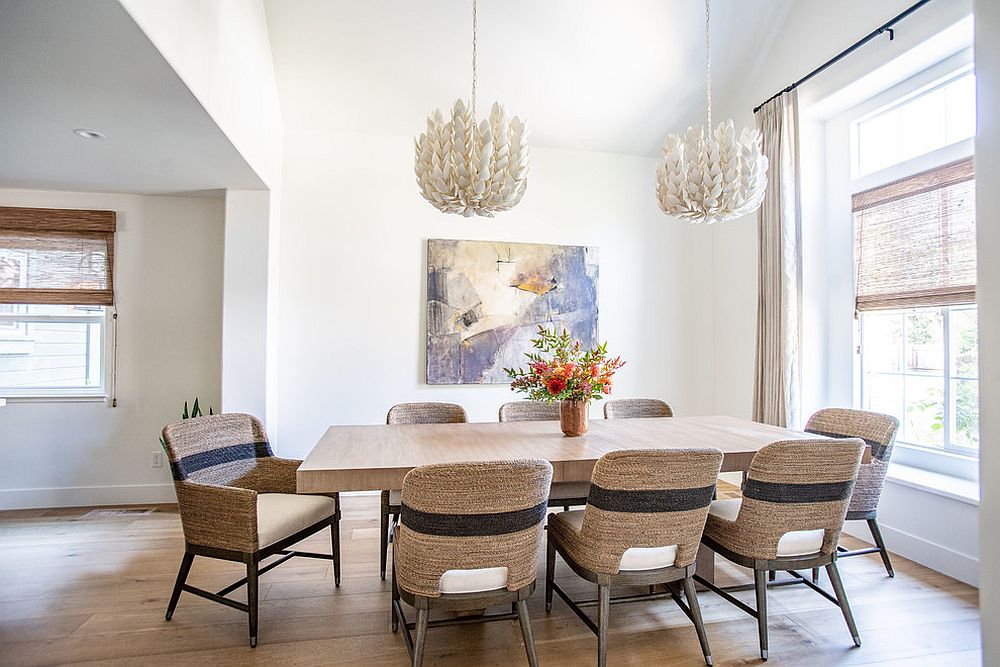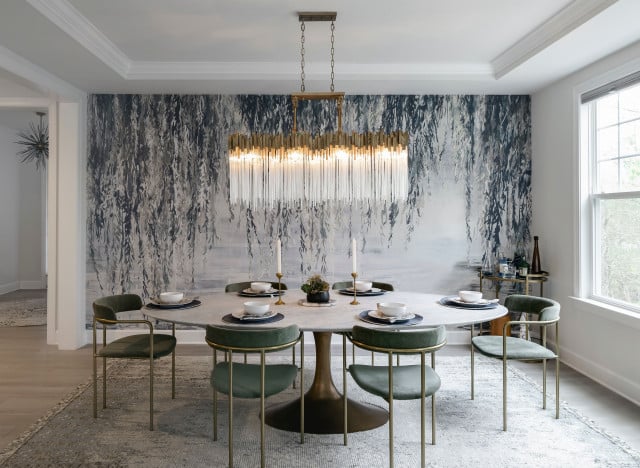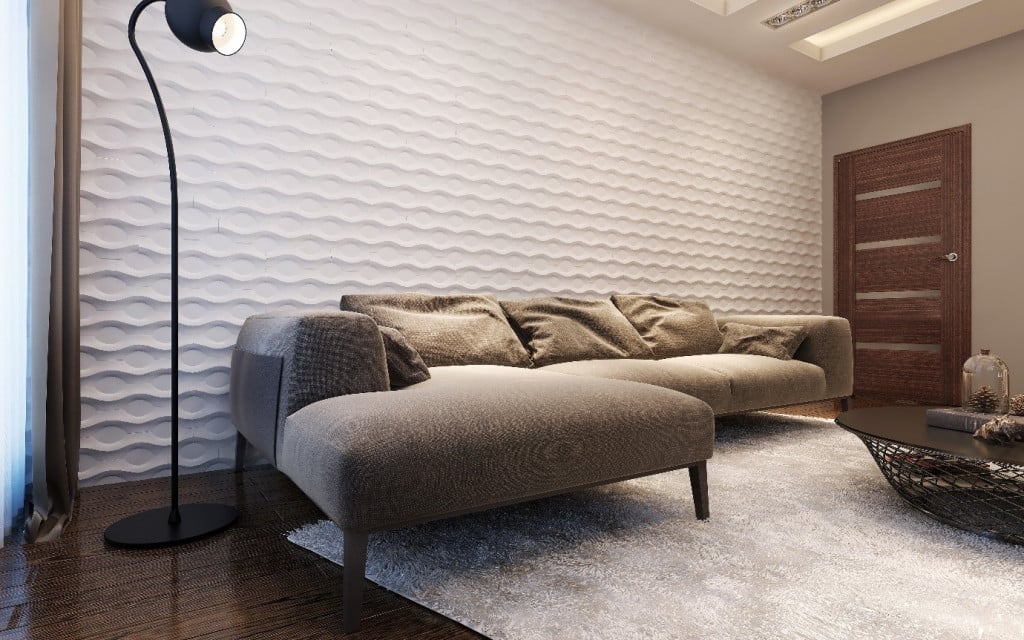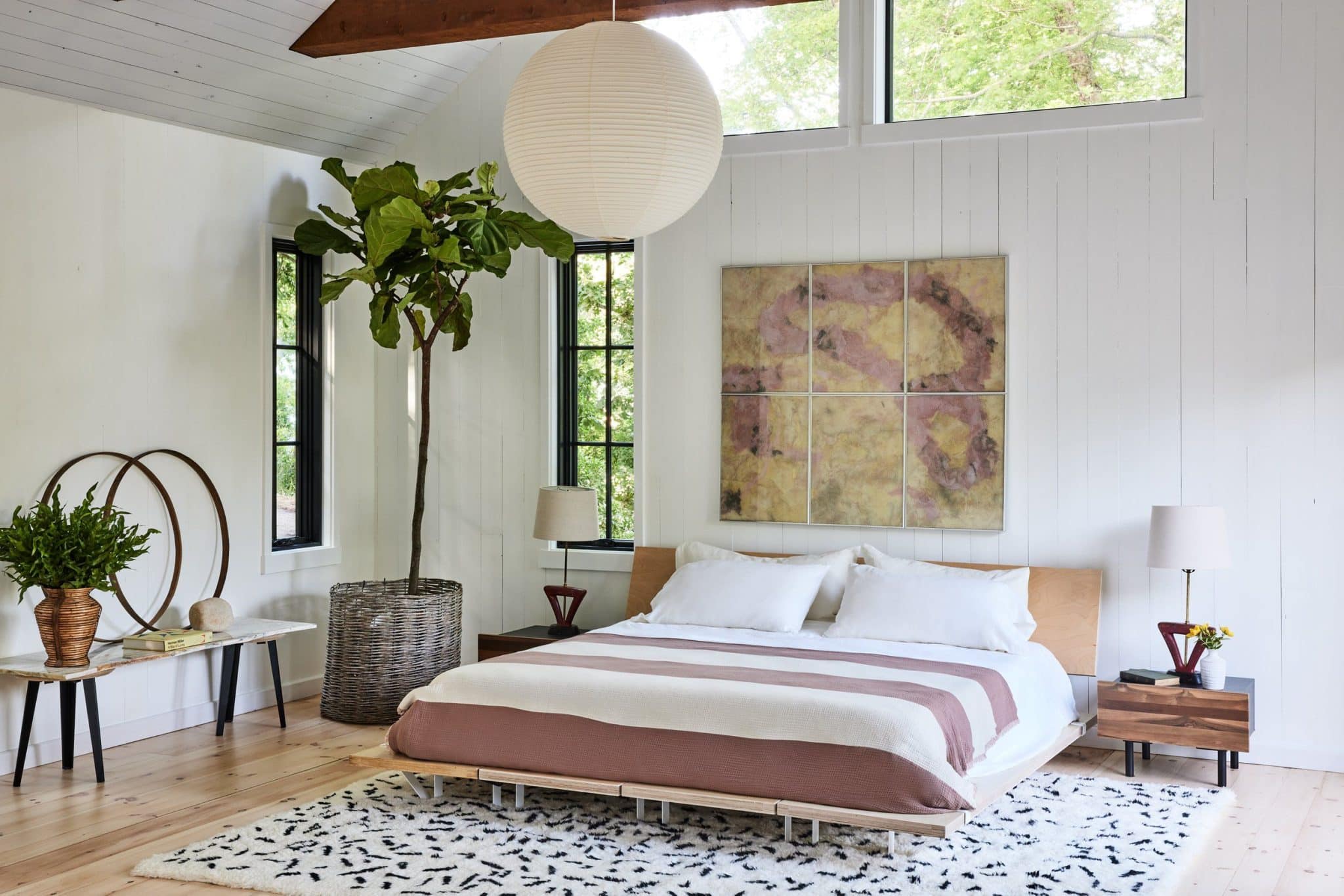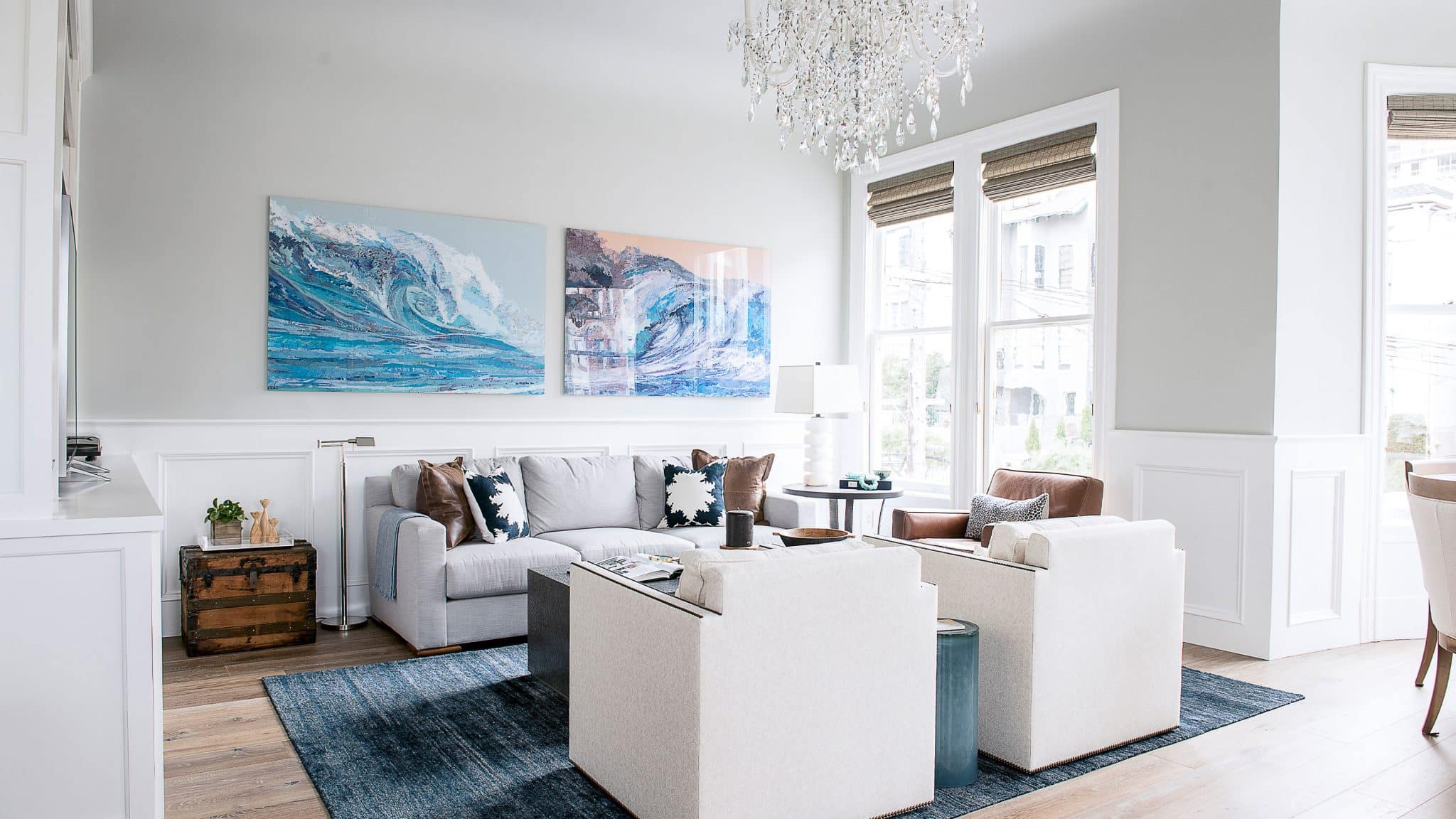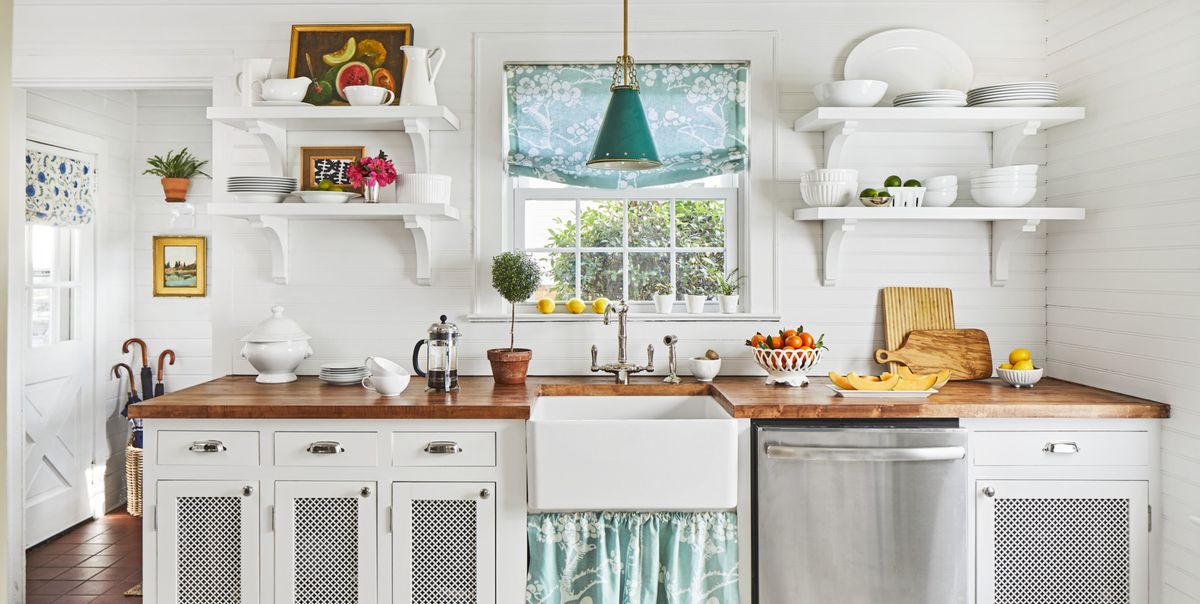How to Select Art and Wall Decor for a Coastal Modern Home?
The coastal interior design style has been on a considerable rise in recent years. This refreshing and serene aesthetic combines the best of coastal and modern elements to create a sophisticated yet relaxed atmosphere in any home.
One of the key features of coastal interior design is the use of natural materials such as wood, rattan, and linen, which add warmth and texture to the space.
Additionally, this style often incorporates a color palette inspired by the ocean and beach, with shades of blue, white, and sandy neutrals creating a calming and peaceful environment. One of the key elements of this design is the thoughtful selection and placement of art and wall decor.
Exploring the Examples of Coastal Homes
1. Calming Colors
The color palette commonly associated with coastal modern design consists of soft neutral shades like white, beige, and gray, accented with pops of pastel blues and greens that mimic the natural hues found along the shoreline. When selecting art, go for pieces that complement these colors or act as a soothing connecting point between them.
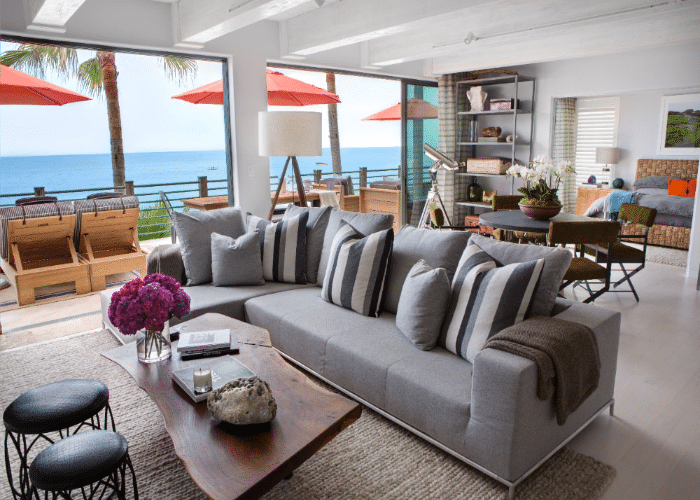
2. Natural Elements
Nature-inspired motifs are fundamental to coastal decor. To maintain cohesion within your space, choose artwork that also incorporates these themes-such as sea spaces, landscapes, or abstract representations of organic shapes. This could include images of waves, shells, birds, or even botanical designs.
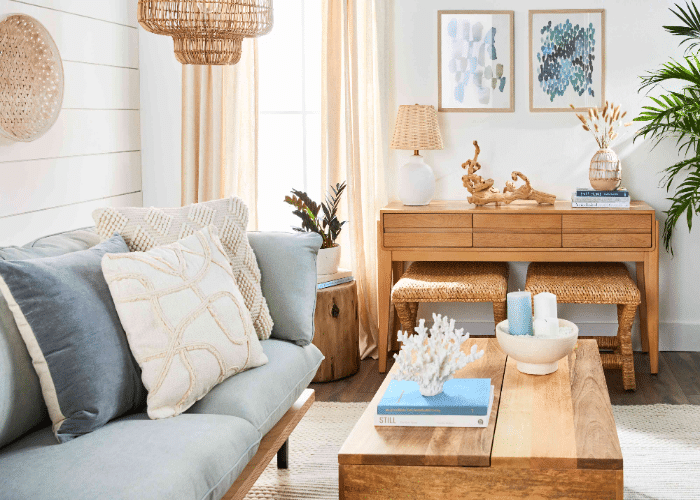
3. Texture
Incorporating multiple textures can add depth and interest to your modern coastal space, as well as create visual harmony between different layers of decor. Look for artwork that features natural materials such as jute, rattan, wood, or woven textiles instead of modern traditional frame prints or paintings.
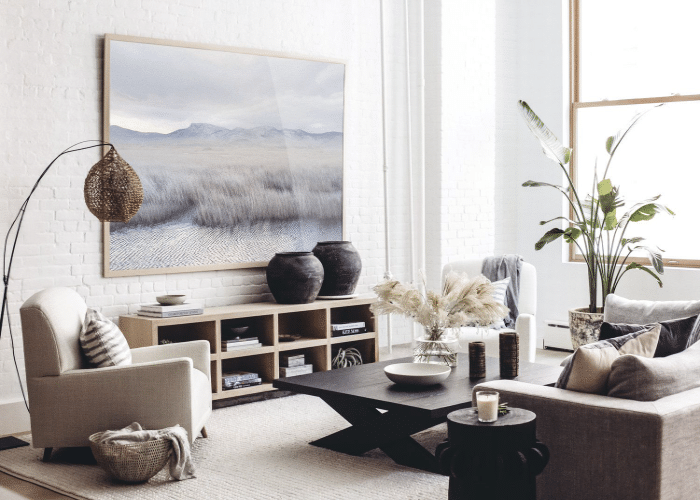
Coastal design is all about simplicity and clean lines. Show this in your choice of artwork by selecting pieces that don’t overwhelm the space with intricate detail or excessive visual clutter. Remember- less is often more when it comes to creating a tranquil environment. Go for simple, abstract paintings or photographs that capture the essence of the beach without being too busy.
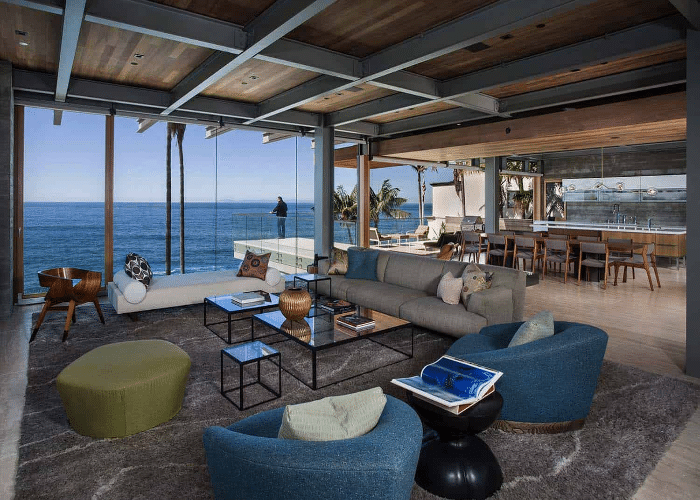
5. Beyond Traditional Art
Often, the essential components of coastal decor can act as wall decor themselves! For example, you might arrange a collection of vintage oars, sea glasses, or driftwood in lieu of hanging a traditional print or painting. Be creative and consider different ways you can integrate found objects into your space to add character and charm.
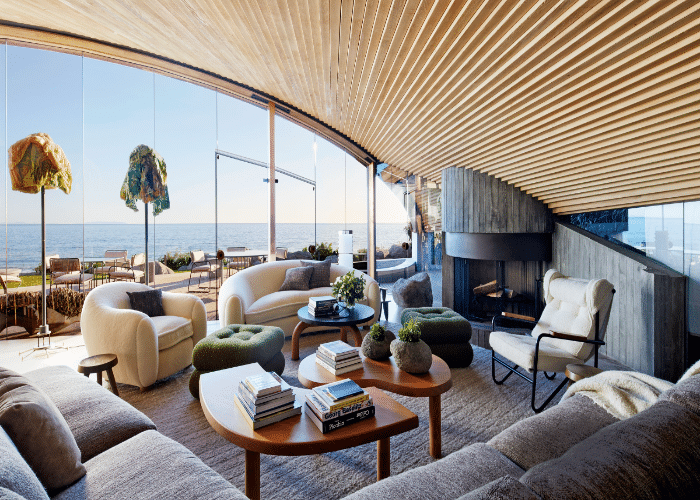
6. Size and Shapes
An interesting way to display artwork is by creating a gallery wall using varying sizes and shapes of prints and frame photos. This adds visual interest in depth to the wall, making it the focal point in the room. You can mix in the other coastal-themed elements, such as seashells or starfish, to further enhance the coastal decor aesthetic. This will add dimension, balance, and visual interest to the space while maintaining the modern coastal aesthetic. Use the same color palette as mentioned earlier for consultancy and a serene atmosphere.
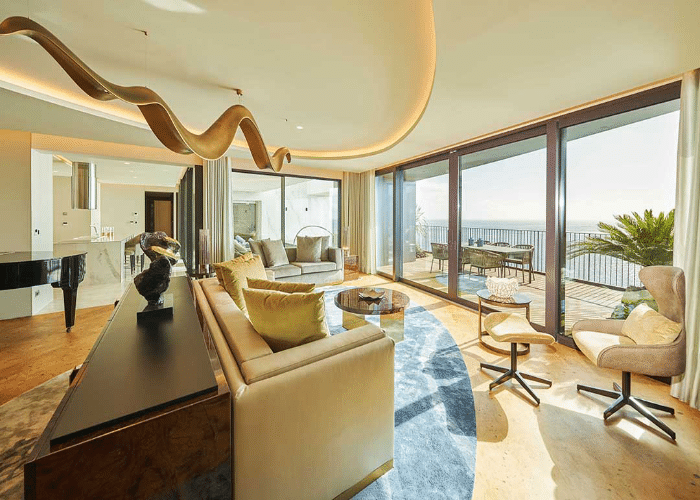
7. Symmetry
A sense of balance and symmetry is crucial in any interior design style, but it is particularly salient in coastal decor. Arrange your artwork in geometrical patterns: play with equal weight distribution, consistent spacing between pieces, or mirroring elements as a part of the styling process. Additionally, consider incorporating symmetrical furniture arrangements, such as matching pairs of chairs or side tables, to create a sense of balance and symmetry.

8. Mood and Context
When selecting artwork for a specific room within your home, consider how it fits into the border context of that space- its function, mood, or existing furnishing. For example, you might choose more playful pieces for the children’s playroom or vibrant and bold art for the living room with neutral furniture. By considering the context, you can ensure that the artwork not only enhances the overall aesthetic but also complements the purpose and atmosphere of the room.
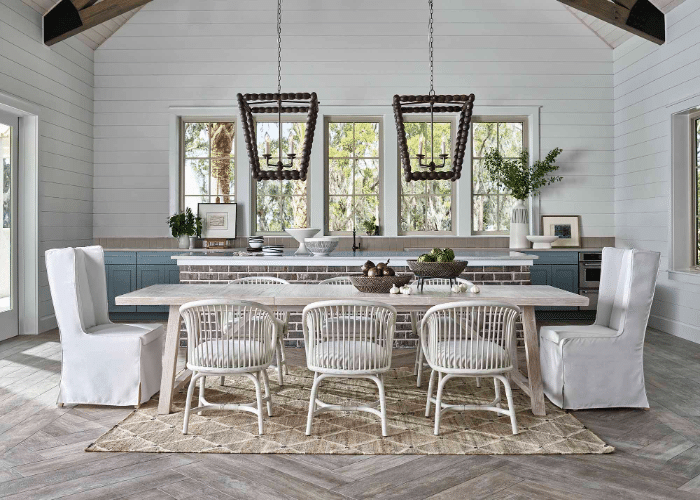
9. Function and Purpose
Understanding the function and purpose of a room is crucial when choosing artwork because it helps determine the appropriate style, size, and subject matter. For instance, a serene landscape painting might be ideal for a bedroom to promote relaxation, while a bold abstract piece can energize a home office space. By aligning the artwork with a room’s intended use, you can create an environment that not only looks visually appealing but also supports the desired mood or atmosphere.
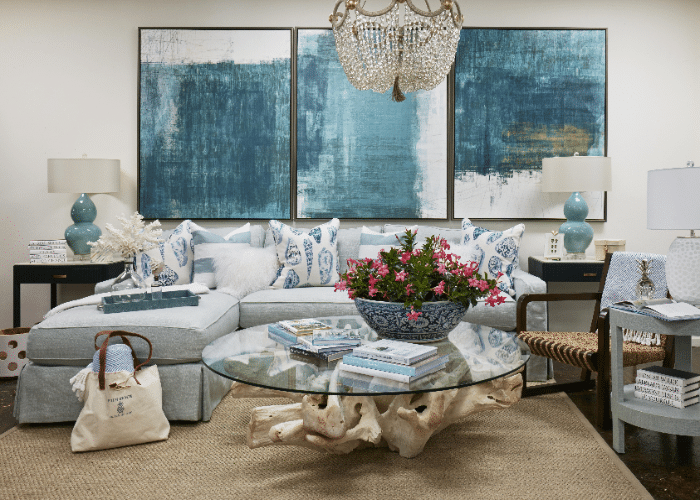
10. Atmosphere
When choosing artwork for a space, it is important to consider the color used in the piece. Warm tones such as red and yellow can create a cozy and inviting atmosphere. At the same time, cool tones like blues and greens can bring a sense of calmness and tranquility. Additionally, the subject matter of the artwork can also contribute to the desired mood. A piece depicting a natural scene can bring a sense of serenity, while abstract or vibrant artwork can add a sense of energy and excitement to a room. Overall, selecting artwork that resonates with the intended mood or atmosphere can greatly enhance the overall ambiance of a space.
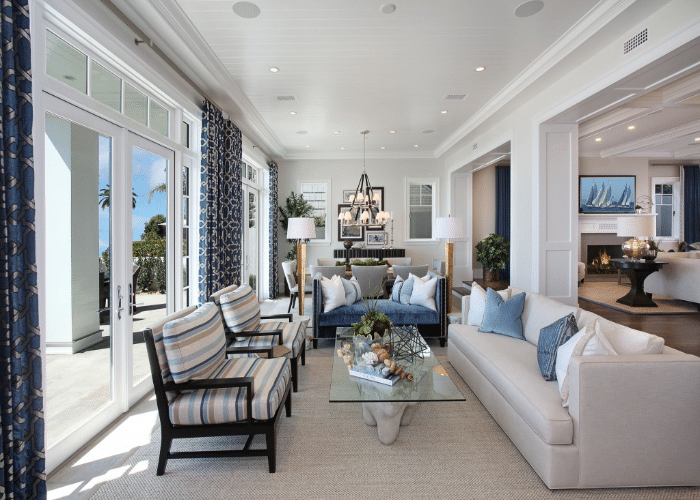
11. Existing Furniture and Architecture
Existing furniture help in determining what works best in a room cannot be underestimated. The colors, patterns, overall design of the furniture, and decor already present in a space can help build and guide the selection of artwork that complements and harmonizes with the existing elements. Considering existing furniture, the artwork can seamlessly integrate into a space and create a cohesive and visually pleasing environment.
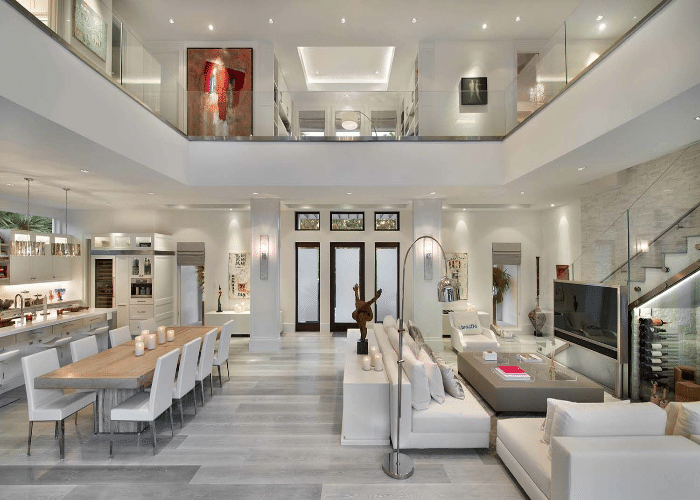
Conclusion
Choosing artwork that compliments the existing elements in a room is crucial for creating a harmonious and balanced space. It not only enhances the overall aesthetic appeal but also contributes to the overall feel of the room.
Also, selecting artwork that resonates with the personal style and taste of the homeowner can add a touch of individuality and personality to a space. Ultimately, the right artwork can transform a room into a true reflection of its occupants, making it a place that feels truly like home.
Whether it’s traditional or contemporary, the artwork should reflect the style and personality of the homeowner while also considering the functionality and purpose of the space.

